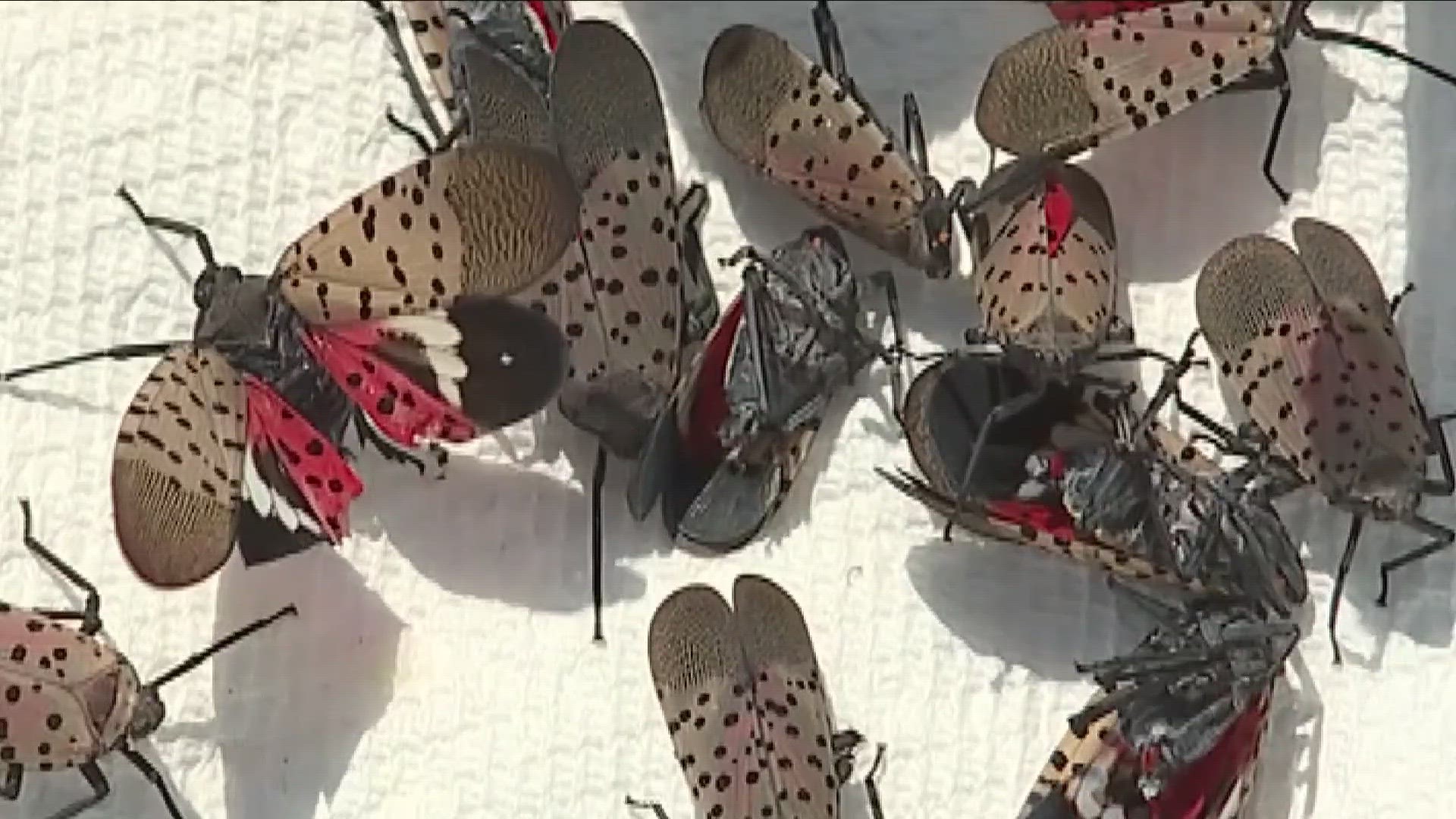BUFFALO, N.Y. — So, what's bugging you?
For some farmers in Western New York the answer may soon be the Spotted Lanternfly, as the invasive species from China continues to spread in parts of the Northeast and Mid-Atlantic regions.
It's enough of a concern that the New York State Department of Agriculture and Markets is renewing its call for people to be vigilant in helping to keep this bug at bay.
The short answer on dealing with them is to kill them on sight and notify the state so they can continue to track the spread of the invasive species from first detected in Pennsylvania in 2014.
By 2020, the first confirmed siting in New York State was in Staten Island.
By the fall of 2022, the pest was finally detected in Western New York.
"There is a location in Buffalo that we found though a home owner report late last season," said New York State Department of Agriculture and Markets Director for Plant Industry, Chris Logue. "We have been in that location since it was reported and surveyed that to get a sense of the size (of the infestation) of that particular area."
How serious an infestation there may be here, though, is a bit uncertain because the eggs those lanternflies may have laid last fall may not hatch until perhaps mid-May.
For now, before foliage fully emerges, egg masses can be more easily spotted and scraped off and disposed of.
In Virginia, they've even trained dogs to try and sniff them out because, once established, they can become voracious.
"It basically sucks the sap out of the plant, which can stress them out and make them more susceptible to drought stress and other attacks from other insects and diseases," Logue said.
Although there are roughly 70 or so species of plants and trees that these pests will attack, they seem to have an especially fond taste for grape vines and apple trees, which spells out the obvious concern among agriculturalists in Western New York.
However, the region's winter weather, which is often cursed, could turn out to be a blessing in this battle.
These pests are described as "hitchhikers," according to Logue, because they are often carried to new locations in wheel wells of vehicles, boat trailers, train cars and so forth.
Because they have spread faster south of Pennsylvania, where they were first detected than north of it, there is a thought that their eggs may not be able to stand extreme cold or a more lengthy winter season like we have here, making it harder for them to become established.
The only way to test the theory, is to have infestation in a particular area, and then measure if the eggs make it through a winter. It's a process that may take a year or two to see if the theory has any validity.

